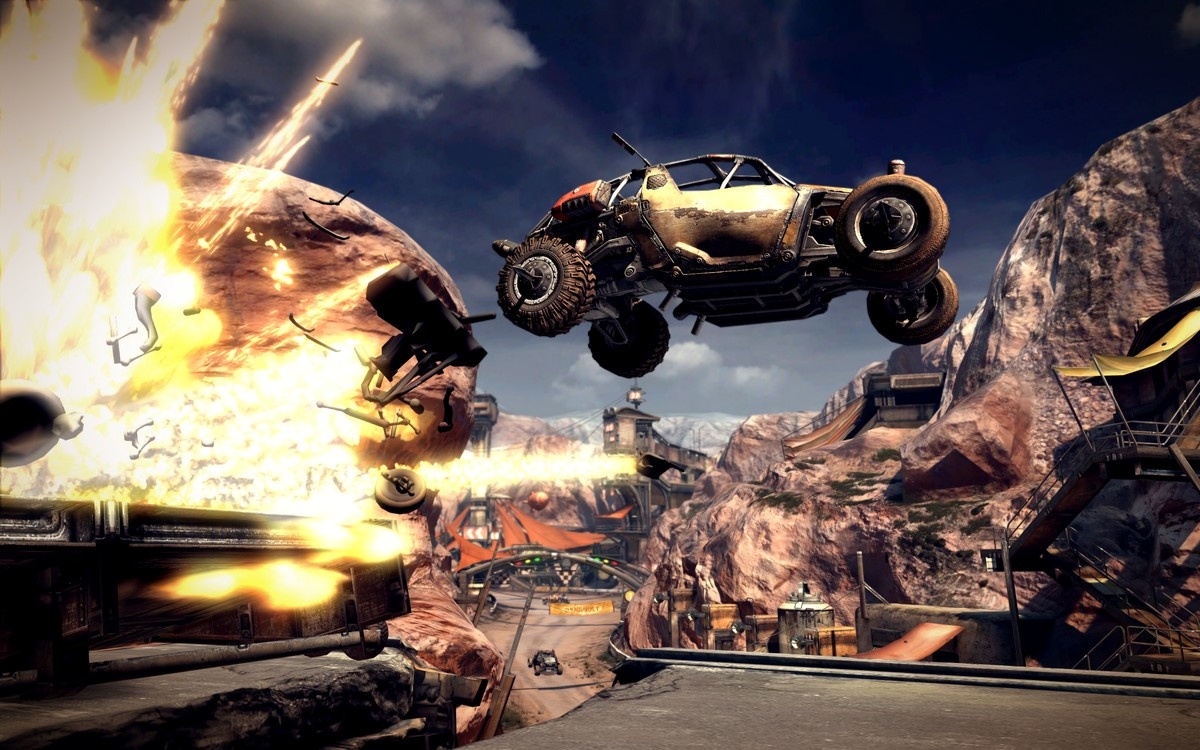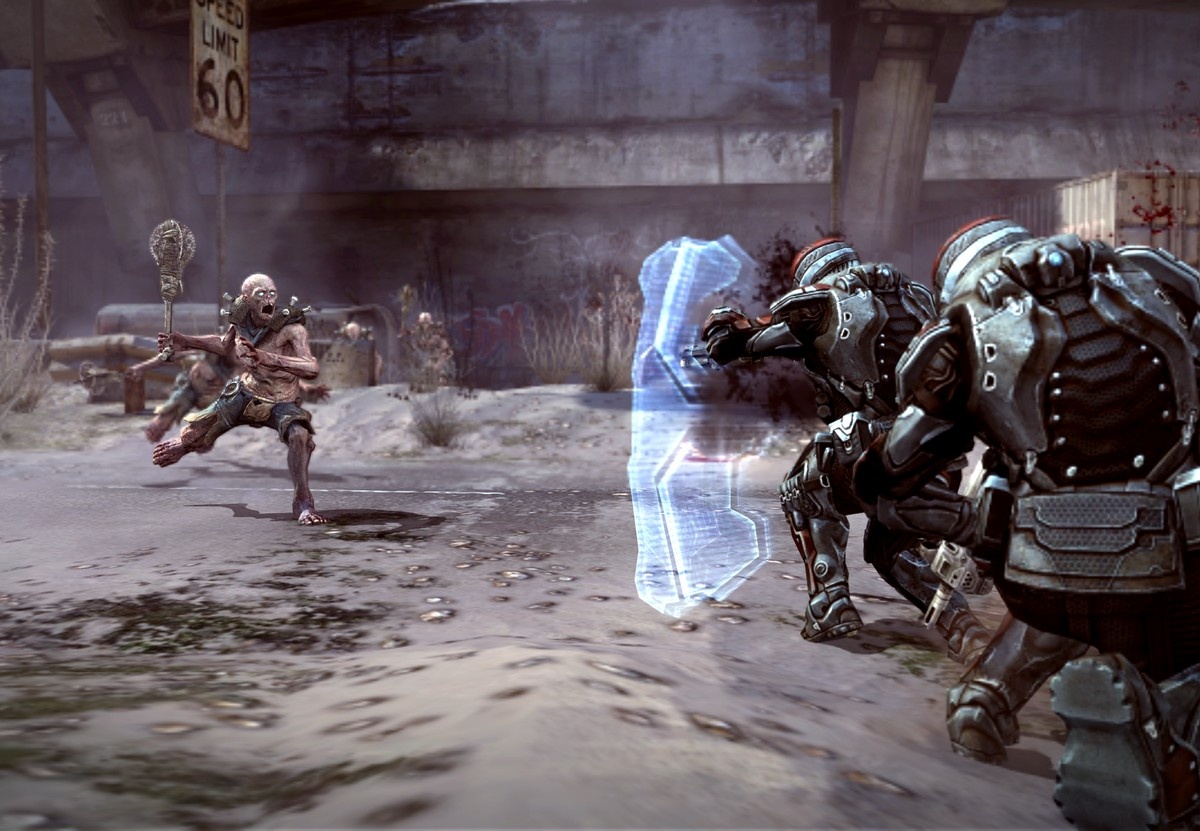Rage Q&A With Matt Hooper and Jason Kim
We talk to the two leads responsible for the upcoming shooter showcasing id Software's latest engine.

With October 4 creeping up, gamers who are fans of renowned developer id Software will soon get their hands on id's upcoming title Rage. We caught up with design director Matt Hooper and senior producer Jason Kim during TGS 2011 to learn a bit more about the soon-to-be-released game.
GameSpot Asia: Was the id Tech 5 engine itself built for consoles?
Matt Hooper: We definitely did the new engine different this time. Everything was geared for the PS3 and Xbox 360 from the start. This was because we've done so much for the PC; it's definitely easier if it were the other way around. We just worked a little harder at the beginning [for the Rage engine].
Jason Kim: We really wanted the id Tech 5 to be a multiplatform technology from the start because we didn't want to just make the engine focus on the PC first, then worry about porting it over to the console [during a title's development process].
MH: We wanted to concentrate more on the game and less on the technical issues and constraints for designers and creative people. In the end, it's less about bells and whistles and more about the shooter fundamentals running well regardless of platform. It's really difficult to do on the consoles because we wanted a game that looked really good, ran on 60 frames per second, and get that feel that we thought was important. The id Tech 5 allowed us to do that in the end.

GSA: Since publishers like to buy and license these engines for their own use, who have you licensed id Tech 5 to at this point in time?
MH: We decided to have our own look and feel of everything revolving around the engine, so we decided to just share it around the Zenimax family first. There's a good possibility that some of our sister companies will be using the tech. All of our IPs will be using the tech in some form or other, but we won't be licensing our tech outside.
GSA: The wasteland setting has been done a lot of times in video games. Why pick that theme to showcase your new tech?
MH: It's not just one or two sources of inspiration, but a dozen or so. [id Software] watch the same movies, play the same games, and read the same books. We sat down on a table and discussed about nothing but "Wouldn't it be cool if we did this?" and if we like it, we put it in the world. We've been tethered with the Doom and Quake world, so it's fresh to start anew with the Rage universe.
We get the Borderlands and Fallout parallels a lot, but when you sit down with the game for an amount of time, there's a lot more fidelity in there. Visually, people want to make a comparison because they haven't got their hands on it. Some of the other games have RPG with exposed stats and dialogue trees [that make for a] heavy experience. Or it's a game just about a million guns. We're still about trying a million things but paring it down to the ones we think work best and making sure everything has a lot of beats to it.
We're happy with the story and the way it unfolds. There's a bit of open-ended nature of the world that we haven't done before. It's a lot different than what we've done in the past. People are always talking about it being postapocalyptic, but really, that's just a cool excuse to twist the world the way you want it. If we wanted to have a realistic game, that would be like GTA. We don't want to show something where you can just walk outside for it; we wanted a departure from reality.

GSA: Concerning Rage's modes, do you see more people playing the single-player more than the multiplayer, or the other way around?
MH: Our goal is to create a lengthy campaign, probably about 15 hours. But for a shooter, that time count is significant because most shooters are eight hours or less. If you do the game's side quests, that adds up to 20 to 25 hours. We put a lot of focus for this significant amount of game alongside the co-op and vehicles. Online components like Combat Rally and Legends of the Wasteland would be a good match for the Rage world. We still care a lot about deathmatch and on-foot combat as a studio, but that kind of sticks to Doom, Quake, and those franchises.
We're really happy with how multiplayer turned out, but it was more on concentrating on single-player and thinking. "That works pretty well. Wouldn't that be fun to do that with a buddy?" We added split-screen mode and online co-op campaigns as a result. The vehicles were there because there weren't any parallels to draw from. We tried the vehicles, physics and all, and we liked it. Those are just bonuses for the players.
GSA: As this is the first time showing off the title in Japan. How's the reception for the title?
MH: It's been good. There's a lot of interest thanks to the elements not present in past id Software shooters. We think it's fairly accessible; the thing I've been telling the Japanese press is not to be afraid of the shooter stigma. Most people did have their eyes wide open when something cool happens.

GSA: What is the one thing that stood out during the development of Rage?
MH: I think the biggest thing from making Rage is diversity in the game. There's always something new. We have the visuals that then matches the gameplay, and we have a big toolbox consisting of the gadgets, the weapons, and the ammo types. We're not aiming for a typical one-look one-feel shooter.
Got a news tip or want to contact us directly? Email news@gamespot.com
Join the conversation